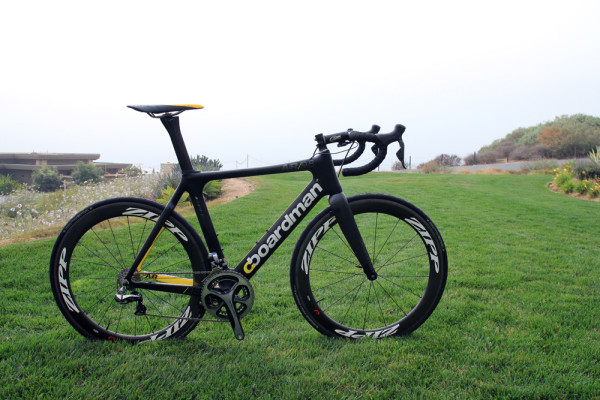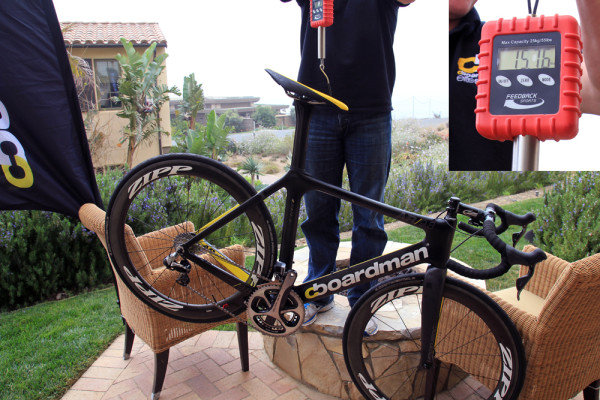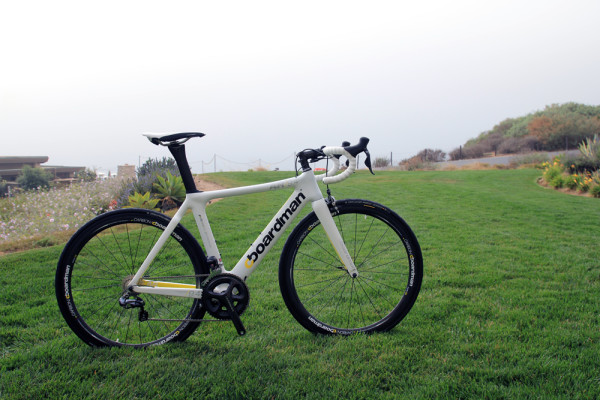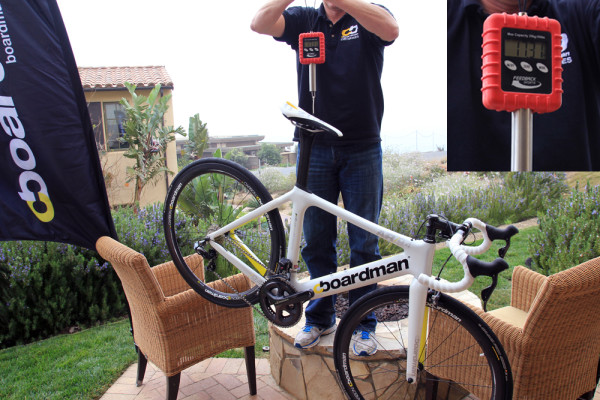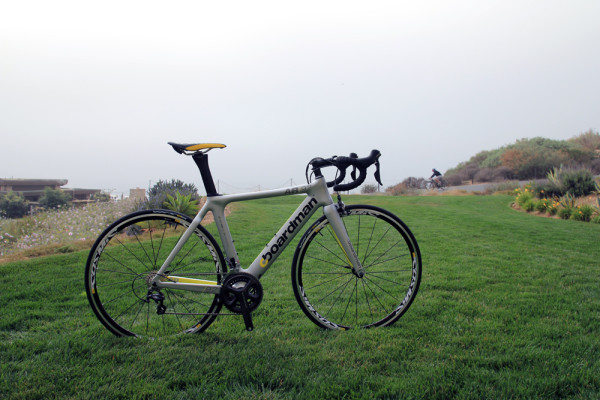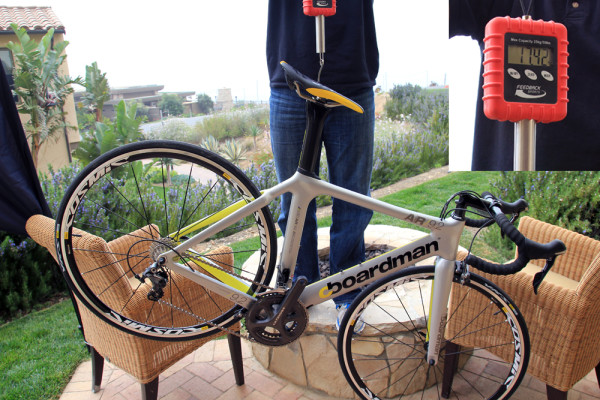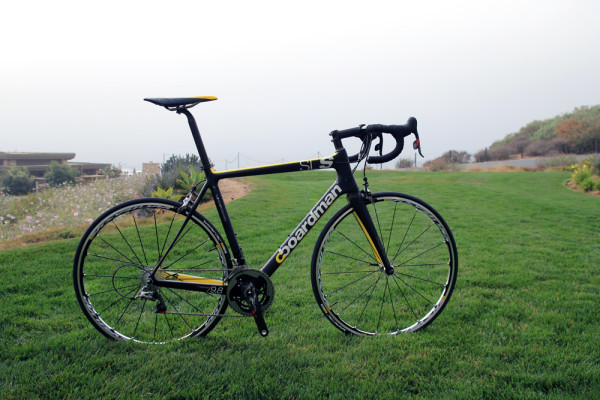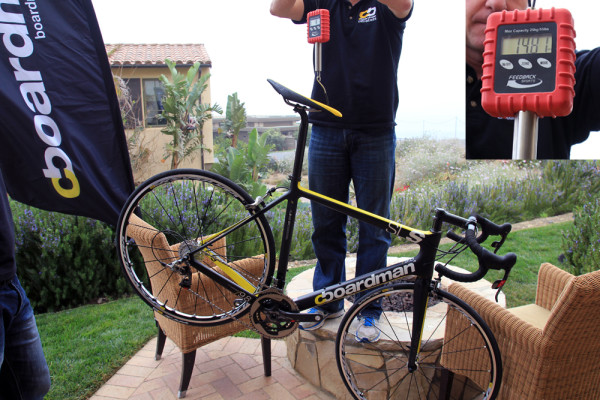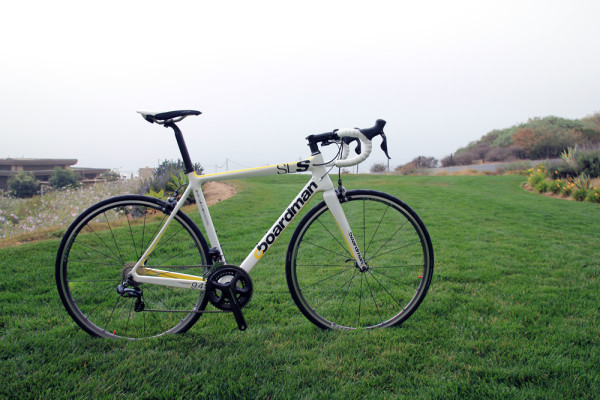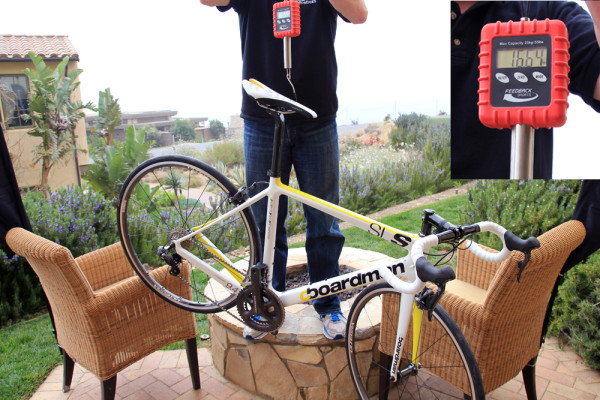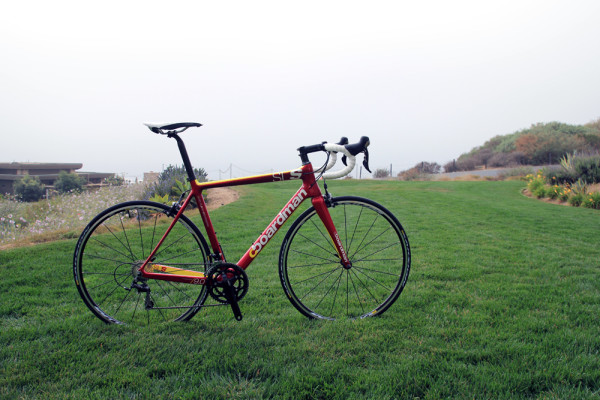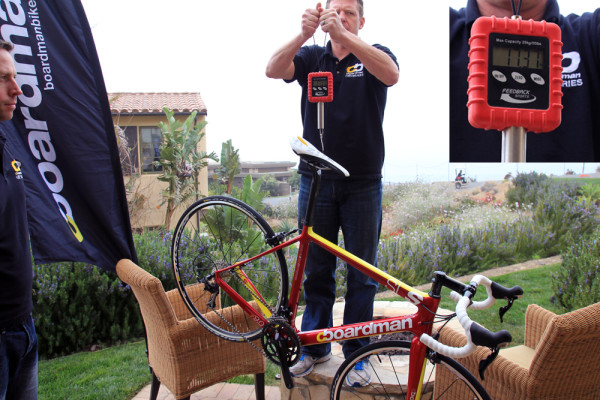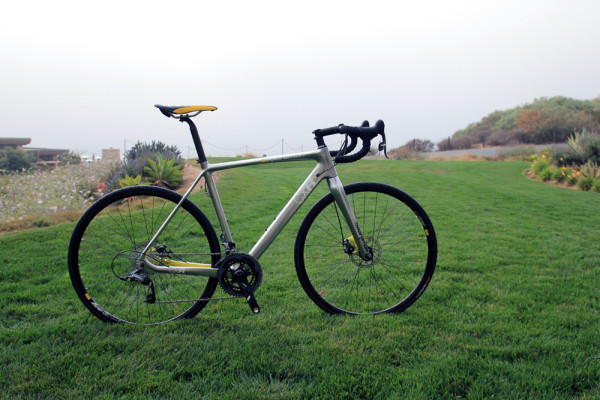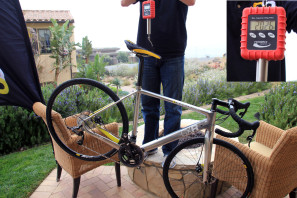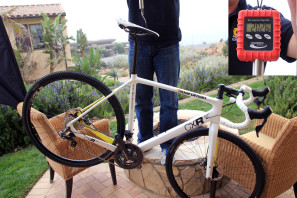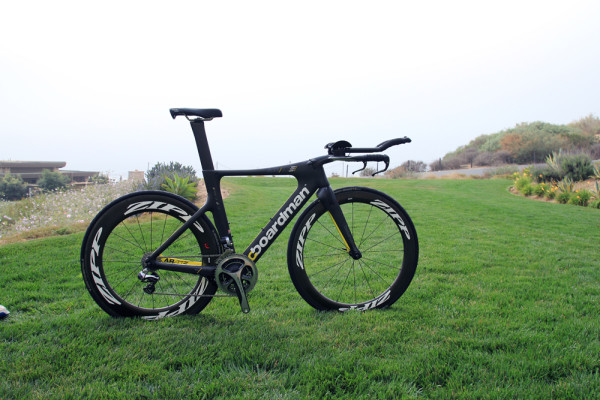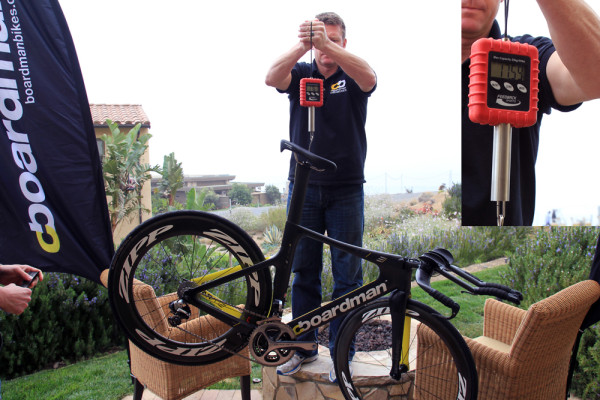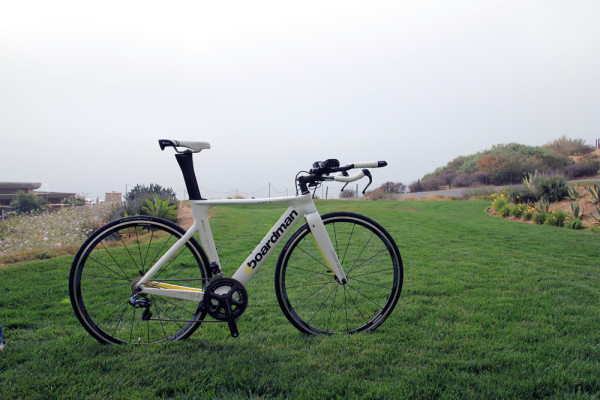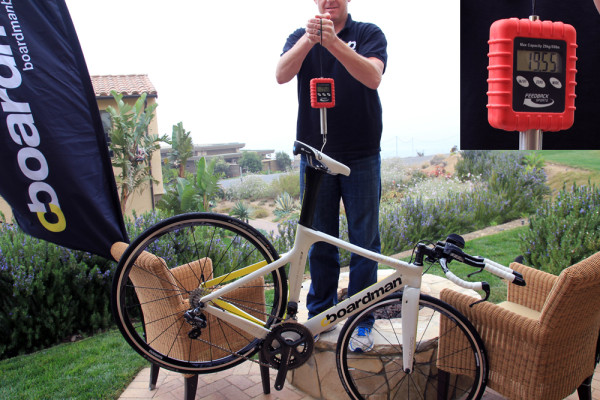Over the past couple years, Boardman bikes have been growing their presence in the US from a relative unknown. Started by the World time Trial Champion, TDF stage winner, and Olympian Chris Boardman, the brand has been expanding and improving their line through heavy use of CFD and FEA analysis to ensure that when the bikes finally make to to the wind tunnel, it’s more of a validation of the design rather than a test. With the introduction of the new Elite Series for 2014, there was a large emphasis on improving aerodynamics with the rider on the bike. When it came to designing and testing the aerodynamics of the new Air/TTE, the bike itself when compared with the previous model was about 20% faster in the wind tunnel – no small feat. However, as soon as the bikes were tested with a rider, the net benefit dropped to 4%. Still an impressive gain, but not nearly the 20% faster that would make for some great marketing.
Boardman seems to take that approach to nearly everything they do, sweating the details because after all, one of Boardman’s nicknames was the Professor. The Elite series promises to be faster, lighter, and more comfortable whether you’re riding road, tri, or even cross. Check out the actual weights and more after the break.
The AiR Series is Boardman’s aero road frame complete with integrated brake sin the fork, a chainstay mounted rear brake, an aero seatpost, and internal cables to hide from the wind. Boardman bikes for 2014 all have slightly taller head tubes with 10mm more on the road side like the Air 9.8 here and 15mm on the tri bikes. With the exception of the fork on the AiR 9.8, all of the Boardman Elite series frames offer the same level of build in for each bike, so the AiR 9.0 uses the same frame as the Air 9.4 and so on.
As the high end, $11,000 AiR 9.8 Di2, this large came in at 15.76lbs (7.14kg).
The AiR 9.4 Di2 was also on hand which uses an Ultegra Di2 drivetrain and Boardman’s own carbon wheels to a more reasonable $5,800.
The lower spec results in a still respectable 17.31lb (7.85kg) weight for a 54cm frame.
The AiR 9.2 retails for $3,800 with a mechanical Ultegra group and Mavic wheels.
The 9.2 weighs 17.42lbs (7.9kg).
Even though the top end light weight SLR wasn’t ready to be weighed, it’s more comfort oriented endurance racer cousin the SLS was. Built with a taller head tube, massive chainstays (that extend all the way to the dropout for stiffness), and slender curved seatstays for comfort, the SLS is made to be a fast but confidence inspiring bike.
The $5,800 SRAM Red equipped 9.8 in a large came in at 14.81lbs (6.72kg).
The $4,600 Di2 9.4 was 16.64lb (7.54kg).
And the $2,800 Shimano 105 equipped 9.0 was a bit heavier at 17.37lbs (7.88kg).
Off road more your thing? Then the CXR will be more interesting with 3 disc equipped cross bikes that are full fender and rear rack compatible. Boardman calls the geometry somewhere between a full CX race bike and a road bike, offering more of a do it all type of ride.
Both the $3,600 9.2 and the $5,500 9.4 came in at the same weight – 20.26 pounds ( 9.19kg), and the 9.2 even had 700x28c slicks meaning this weight is a little light. Why the difference? While you’re paying more for the improved performance of the Shimano Ultegra Di2 system with the new hydraulic disc brakes, the system weighs about the same as SRAM force and BB7 SL brakes.
The AiR TTE marks a huge leap forward in design compared to the AiR TT below which was the bike Pete Jacobs rode to victory at the 201 Kona Iron Man World Championships. The AiR TTE is up there with the other modern super bikes with hidden brakes, a super clean cockpit, and a carefully crafted aero package with tube shapes optimized to winds at 20 degrees yaw. According to Boardman’s measurements, the average wind speed encountered on a ride is about 9 mph, while the average yaw is about 20-25 degrees. They mentioned that they have been optimizing tube shapes to 20 degrees yaw since 2007.
Because they’re really looking at how the rider impacts the aerodynamics of the frame, Boardman prefers to use a live rider to test out their bikes in the wind tunnel and use the same rider across the board.
The TTE 9.8 Di2 will set you back a hefty $13,000 and comes in at 17.59lbs (7.98kg).
The Air TT gets an upgraded frame and fork, including aero brakes tucked inside the fork legs. Boardman is proud of the fact that the AiR TT 9.0 frame and fork has tested faster than the Ironman Winning bike of Jacobs, and it can be had for only $3,000 for a complete bike.
The $5,500 Di2 AiR TT 9.4 weighs 19.55lbs ( 8.87kg) with non aero wheels.
If you’re looking for more details on each model, check out our original coverage of the Elite series, or head over to Boardman’s website.
